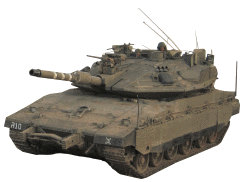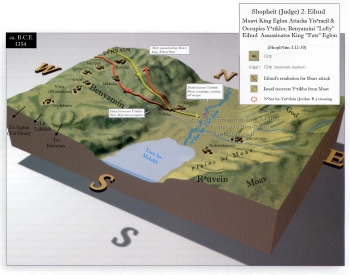
 |

 250x238.jpg) |
Tor•âhꞋ instructs that, beginning the day after the special Sha•bâtꞋ of PësꞋakh, Yi•sᵊr•â•eilꞋ is to count shëvꞋa shâvu•otꞋ = 49 days. Then, the next day is Khaj ha-Shâvu•otꞋ—the 50th, not 49th, day.
Thus,
just as PësꞋakh and Khaj ha-Matz•otꞋ commemorate the start of a new period with the Yᵊtzi•âhꞋ, including the first eiꞋrëv rav of Israelis-by-choice, who lived as nomads bᵊ-mi•dᵊbarꞋ Sin•aiꞋ,
Khaj ha-Shâvu•otꞋ likewise commemorates the start of a new period, after everyone who had come out of Mi•tzᵊraꞋyim had died, with the harvesting of a new OꞋmër (crop) of wheat—symbolizing a new generation, the generation who entered Yi•sᵊr•â•eilꞋ.
 |
%20Assyria%209th%20or%208th%20century%20Ivory%20300x269.gif) |
The ancient Nᵊviy•imꞋ perceived é‑‑ä to sit on a Celestial Më•rᵊkâv•âhꞋ-Throne, being pulled across the heavens by four self-animated kᵊruv•imꞋ.
Khaj ha-Shâvu•otꞋ orbits the theme of the OꞋmër, the spring harvest of wheat. Ancients saw a parallel in the timeless non-physical Domain of é‑‑ä: the gathering (harvesting) of the non-physical OꞋmër — the postmortem nᵊphâsh•otꞋ of Yi•sᵊr•â•eilꞋ.
 |
 |
The Khaj ha-Shâvu•otꞋ Ha•phᵊtâr•âhꞋ connection of the OꞋmër and Më•rᵊkâv•âhꞋ form early evidence of Tor•âhꞋ correcting the Egyptian error, teaching the proper principle of life beyond death is for those of Yi•sᵊr•â•eilꞋ who do their best to live according to Tor•âhꞋ.
 |
During a famine ca. B.C.E. 1248, a Yi•sᵊr•â•eil•iꞋ couple from Beit LëkhꞋëm, El i-mëlꞋëkh and his wife Nâ•âm•iꞋ, emigrated east, around Yâm ha-MëlꞋakh, into Mo•âvꞋ, near DërꞋëkh ha-MëlꞋëkh, with their two sons, who married Mo•âv•itꞋ women—one of whom was Rut.
Over a period of time, Nâ•âm•iꞋ's husband, El i-mëlꞋëkh, and both of her sons, died.
Living alone in a foreign country with two Mo•âv•itꞋ daughters-in-law, Nâ•âm•iꞋ decided to back to her home in Beit LëkhꞋëm and instructed both of her Mo•âv•itꞋ daughters-in-law to go back to their Mo•âv•itꞋ homes and remarry. But Rut adamantly insisted on remaining with Nâ•âm•iꞋ, identifying with Tor•âhꞋ and Yi•sᵊr•â•eilꞋ. Rut's words became the exemplar of the Israeli-by choice:
Then Rut replied, "Don't push me away, to abandon you, to turn from following you. Because where you go, I shall go. Where you lodge, I shall lodge. Your am is my am, and your Ël•oh•imꞋ is my Ël•oh•imꞋ. Where you die, I shall die and be buried. May é‑‑ä do so to me, and more, if anything other than death separates me from you."
 |
So Rut, the widowed Israeli-by-choice, traveled to Beit LëkhꞋëm, YᵊhudꞋâh with her mother-in-law, Nâ•âm•iꞋ where Rut worked in the fields owned by their relative, BōꞋaz.
It was while Rut was harvesting the wheat OꞋmër, during Khaj ha-Shâvu•otꞋ, that she and BōꞋaz became acquainted. As Rut's closest relative, Tor•âhꞋ required BōꞋaz to become a redeemer-husband to her, fathering children for her. Together, BōꞋaz and Rut became the great-grandparents of Dâ•widꞋ ha-MëlꞋëkh, who would be born in their hometown of Beit LëkhꞋëm.
Dâ•widꞋ ha-MëlꞋëkh is the exemplar par excellence of of his Scion redeemer-Mâ•shiꞋakh of the Royal Beit-Dâ•widꞋ to husband Yi•sᵊr•â•eilꞋ—who would also be born in their hometown of Beit LëkhꞋëm.

Optional parental preparation:
What does Mâ•shiꞋakh mean?
What is an Israeli- or Jew- by-choice? Why shouldn't the term "convert" be used? (Tor•âhꞋ prohibits discriminating between native and choice Israelis / Jews.)
What is a Khaj?What is a pilgrimage? (Muslim Haj plagiarized from Tor•âhꞋ Khaj.)
If the sun, moon and stars aren't being pulled across the celestial arch in a chariot, then how does it work?
What is an Israeli-, or Jew-, by-choice? (Depends on who you ask, Whom–or whom, what human–you regard as authority; or Tor•âhꞋ. Most accurately and non-racistly, this describes a person who, while not born and raised in Tor•âhꞋ, subscribes to, and does their best to live according to, the principles of our ancient family religion, defined in Ta•na"khꞋ.)
What is a non-physical domain and why must it be timeless? (Hint: time is nothing more than the measurement of physical objects relative to (i.e., through) physical space. In a non-physical domain, there is nothing physical moving and nothing physical to measure movement relative to nothing.)
What is the nëphꞋësh? (Contrast "you" or "me" as a nëphꞋësh operating the body, via the brain, as an avatar.)
What is a caravan, a nexus and where were the two major caravan trade routes between Mesopotamia (Iraq) through the nexus of Yi•sᵊr•â•eilꞋ to Mi•tzᵊraꞋyim? (See map.)
Questions you might anticipate that your child might raise and be prepared to discuss:
What is a redeemer (Levirate) marriage?
What are paternal great-grandparents?
What is celestial?
What does the verb, orbit, mean?
What is postmortem mean?
What is a Moavit? (A female from Moav.)
What does adamant mean?
What does the verb, lodge, mean?
What does kindred, or kinfolk, mean?
How are barley and wheat harvested, and what are they used for?
What does "redeem" mean? How is redeem different from ransom?
What does the verb, husband, mean? What is animal husbandry? So, what is a husband really?
What is a scion?
What is a royal house? Royal family?
What is a hometown?
![]()
 |
 |